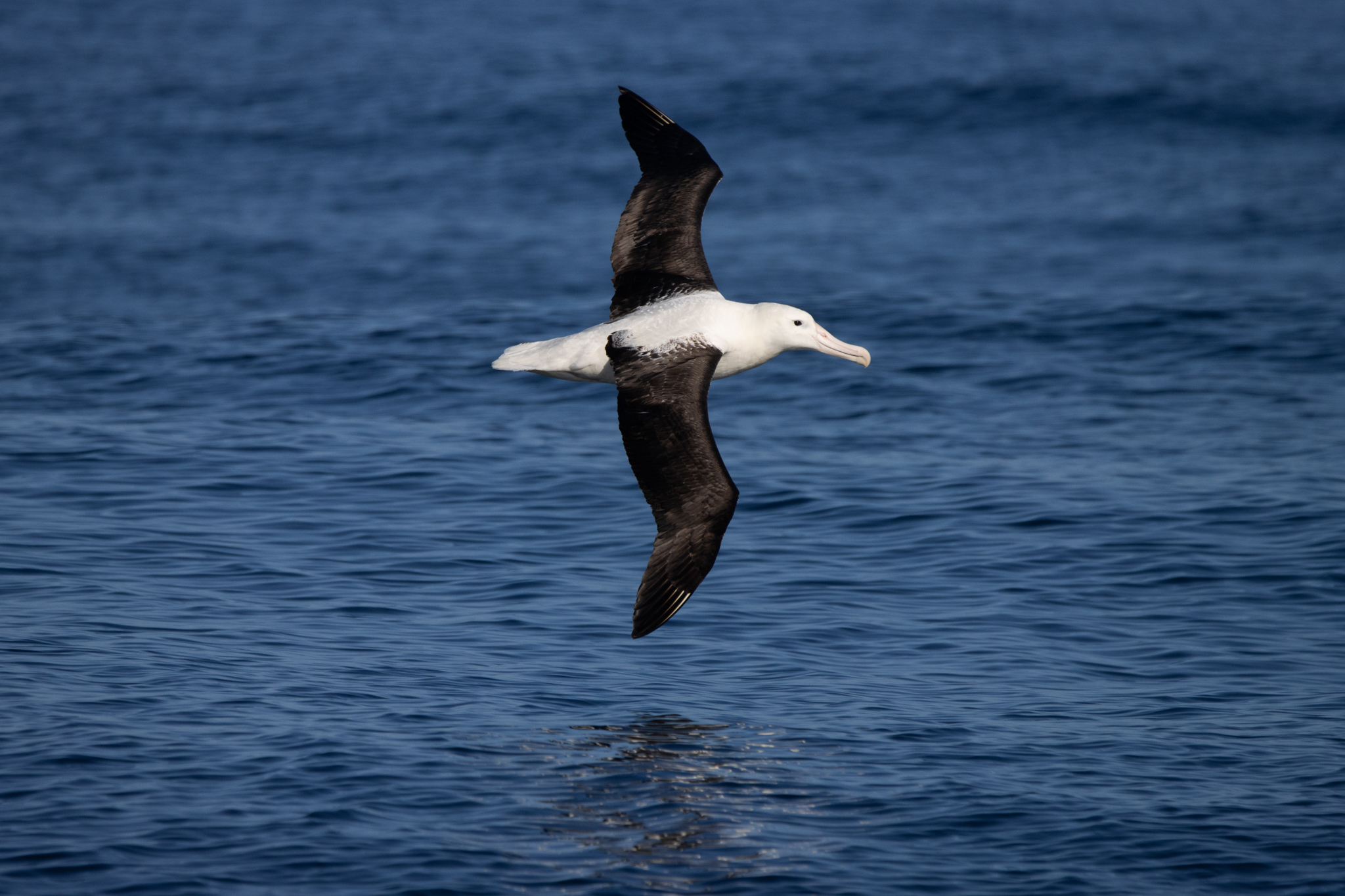 A Northern Royal Albatross in flight over the ocean; photograph by Oscar Thomas. The new treaty on the conservation and sustainable use of marine biological diversity of areas beyond national jurisdiction (BBNJ) could be significant for the conservation of albatrosses and petrels.
A Northern Royal Albatross in flight over the ocean; photograph by Oscar Thomas. The new treaty on the conservation and sustainable use of marine biological diversity of areas beyond national jurisdiction (BBNJ) could be significant for the conservation of albatrosses and petrels.
On Monday 19 June, whilst albatross enthusiasts were raising awareness of plastic pollution in celebration of World Albatross Day, a momentous occasion in ocean conservation was taking place at the UN Headquarters in New York. Governments officially adopted a new legally binding instrument under the United Nations Convention on the Law of the Sea (UNCLOS) on the conservation and sustainable use of marine biological diversity of areas beyond national jurisdiction (BBNJ).
After the successful conclusion of negotiations on the Agreement in early March 2023, the draft text underwent a technical edit by an informal open-ended working group before its adoption.
UN Secretary, António Guterres, in his address to delegates of the Intergovernmental Conference (IGC) pointed to the multiple threats faced by the ocean and hailed governments for coming together on the landmark treaty at such a critical time, saying:
“Climate change is heating our planet, disrupting weather patterns and ocean currents, and altering marine ecosystems and the species living there…Marine biodiversity is under attack from overfishing, over-exploitation and ocean acidification. Over one-third of fish stocks are being harvested at unsustainable levels. And we are polluting our coastal waters with chemicals, plastics and human waste. The historic achievement we celebrate today is vital to address these threats, and ensure the sustainability of those areas not covered under national jurisdiction.”
The Agreement, which has been under negotiation by the IGC since 2018, provides a legal framework for governing the vast areas of waters beyond national boundaries – over two-thirds of the ocean. It incorporates a number of mechanisms to ensure the conservation and sustainable use of BBNJ, including:
-
provisions on marine genetic resources (MGRs);
-
Area Based Management Tools (ABMT), including marine protected areas (MPAs);
-
environmental impact assessments (EIA), and;
-
capacity-building and the transfer of marine technology (CB&TMT).
Albatrosses and petrels traverse vast areas of the open ocean and cross multiple national borders, making conservation efforts complex and challenging. The treaty could herald a significant moment for the conservation of ACAP-listed species, offering a framework to address the numerous challenges faced by these remarkable seabirds.
IGC President Rena Lee (Singapore), who has been praised for steering the Agreement to its success, has urged for its swift ratification. The BBNJ Agreement requires 60 parties to ratify it before it can come into force and opens for signature on 20 September 2023.
More information on the BBNJ can be found at the United Nations website, here.
3 July 2023

 English
English  Français
Français  Español
Español